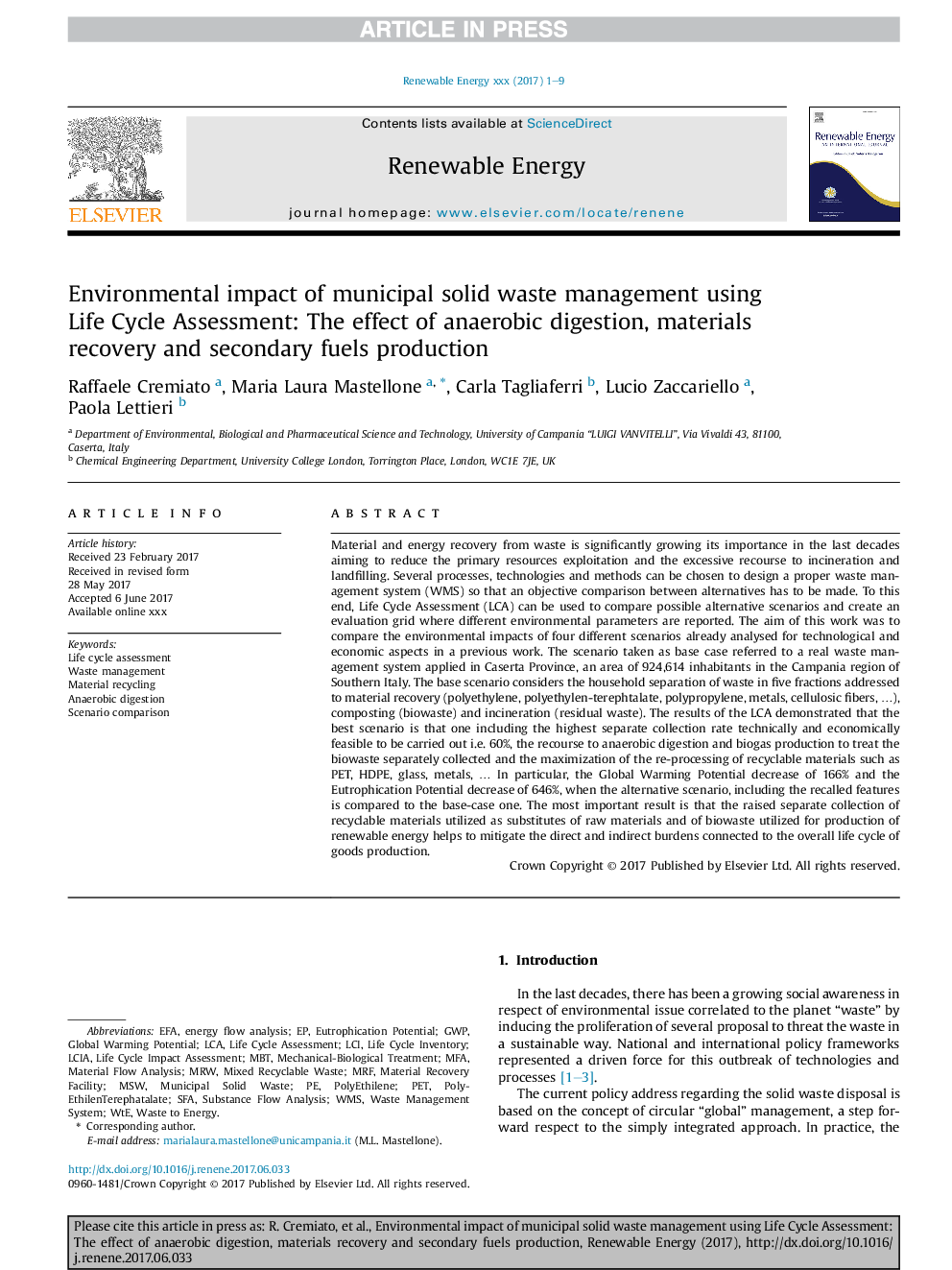| کد مقاله | کد نشریه | سال انتشار | مقاله انگلیسی | نسخه تمام متن |
|---|---|---|---|---|
| 6764461 | 1431580 | 2018 | 9 صفحه PDF | دانلود رایگان |
عنوان انگلیسی مقاله ISI
Environmental impact of municipal solid waste management using Life Cycle Assessment: The effect of anaerobic digestion, materials recovery and secondary fuels production
ترجمه فارسی عنوان
تاثیر زیست محیطی مدیریت زباله های شهری با استفاده از ارزیابی چرخه زندگی: اثر هضم بی هوازی، بازیابی مواد و تولید ثانویه سوخت
دانلود مقاله + سفارش ترجمه
دانلود مقاله ISI انگلیسی
رایگان برای ایرانیان
کلمات کلیدی
LCIAMRWGWPLCIMBTWTEMSWMRFWMSEFASFALife cycle impact assessment - ارزیابی تاثیر چرخه زندگیLCA - ارزیابی چرخه حیاتLife Cycle Assessment - ارزیابی چرخه عمر یا چرخه حیاتMaterial recovery facility - امکانات بازیابی موادmaterial recycling - بازیافت موادMaterial flow analysis - تجزیه و تحلیل جریان جریانEnergy flow analysis - تجزیه و تحلیل جریان جریانSubstance flow analysis - تجزیه و تحلیل جریان موادMechanical-biological treatment - درمان مکانیکی بیولوژیکیwaste to energy - زباله به انرژیMunicipal solid waste - زباله جامد شهریWaste management system - سیستم مدیریت زبالهWaste management - مدیریت پسماند یا مدیریت زبالهLife Cycle Inventory - موجودی چرخه زندگیAnaerobic digestion - هضم بیهوازیMFA - وزارت امور خارجهPET - پتglobal warming potential - پتانسیل گرمایش جهانیEutrophication potential - پتانسیل یوتروفیزیکی
موضوعات مرتبط
مهندسی و علوم پایه
مهندسی انرژی
انرژی های تجدید پذیر، توسعه پایدار و محیط زیست
چکیده انگلیسی
Material and energy recovery from waste is significantly growing its importance in the last decades aiming to reduce the primary resources exploitation and the excessive recourse to incineration and landfilling. Several processes, technologies and methods can be chosen to design a proper waste management system (WMS) so that an objective comparison between alternatives has to be made. To this end, Life Cycle Assessment (LCA) can be used to compare possible alternative scenarios and create an evaluation grid where different environmental parameters are reported. The aim of this work was to compare the environmental impacts of four different scenarios already analysed for technological and economic aspects in a previous work. The scenario taken as base case referred to a real waste management system applied in Caserta Province, an area of 924,614 inhabitants in the Campania region of Southern Italy. The base scenario considers the household separation of waste in five fractions addressed to material recovery (polyethylene, polyethylen-terephtalate, polypropylene, metals, cellulosic fibers, â¦), composting (biowaste) and incineration (residual waste). The results of the LCA demonstrated that the best scenario is that one including the highest separate collection rate technically and economically feasible to be carried out i.e. 60%, the recourse to anaerobic digestion and biogas production to treat the biowaste separately collected and the maximization of the re-processing of recyclable materials such as PET, HDPE, glass, metals, â¦Â In particular, the Global Warming Potential decrease of 166% and the Eutrophication Potential decrease of 646%, when the alternative scenario, including the recalled features is compared to the base-case one. The most important result is that the raised separate collection of recyclable materials utilized as substitutes of raw materials and of biowaste utilized for production of renewable energy helps to mitigate the direct and indirect burdens connected to the overall life cycle of goods production.
ناشر
Database: Elsevier - ScienceDirect (ساینس دایرکت)
Journal: Renewable Energy - Volume 124, August 2018, Pages 180-188
Journal: Renewable Energy - Volume 124, August 2018, Pages 180-188
نویسندگان
Raffaele Cremiato, Maria Laura Mastellone, Carla Tagliaferri, Lucio Zaccariello, Paola Lettieri,
